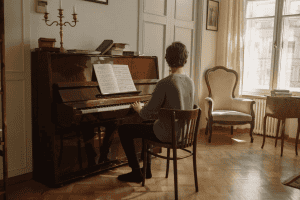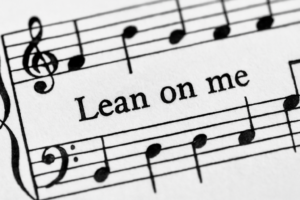
Do you know?
The melody of “Can’t Help Falling in Love” wasn’t completely new when Elvis recorded it in 1961. It was actually adapted from a French love song written in the 1700s called “Plaisir d’amour.”
Few songs feel as timeless and heartfelt as Can’t Help Falling in Love. The moment those first notes ring out, it’s instantly recognizable.
The best part? This beautiful piece is easier to learn than you might think. With the right guidance, you can start playing it today, even if you’re just beginning your piano journey.
That’s where we at Skoove come in. We’ll show you step by step how to move smoothly from one note to the next and how to bring both hands together. With a little patience and practice, you’ll be surprised at how quickly this classic piano song will flow from your fingertips.
What are the notes in “Can’t Help Falling in Love”
At its heart, playing Can’t Help Falling in Love on piano is built on a simple but beautiful pattern. The melody moves gently step by step, with just a few small leaps, while the left hand supports it with steady bass notes.
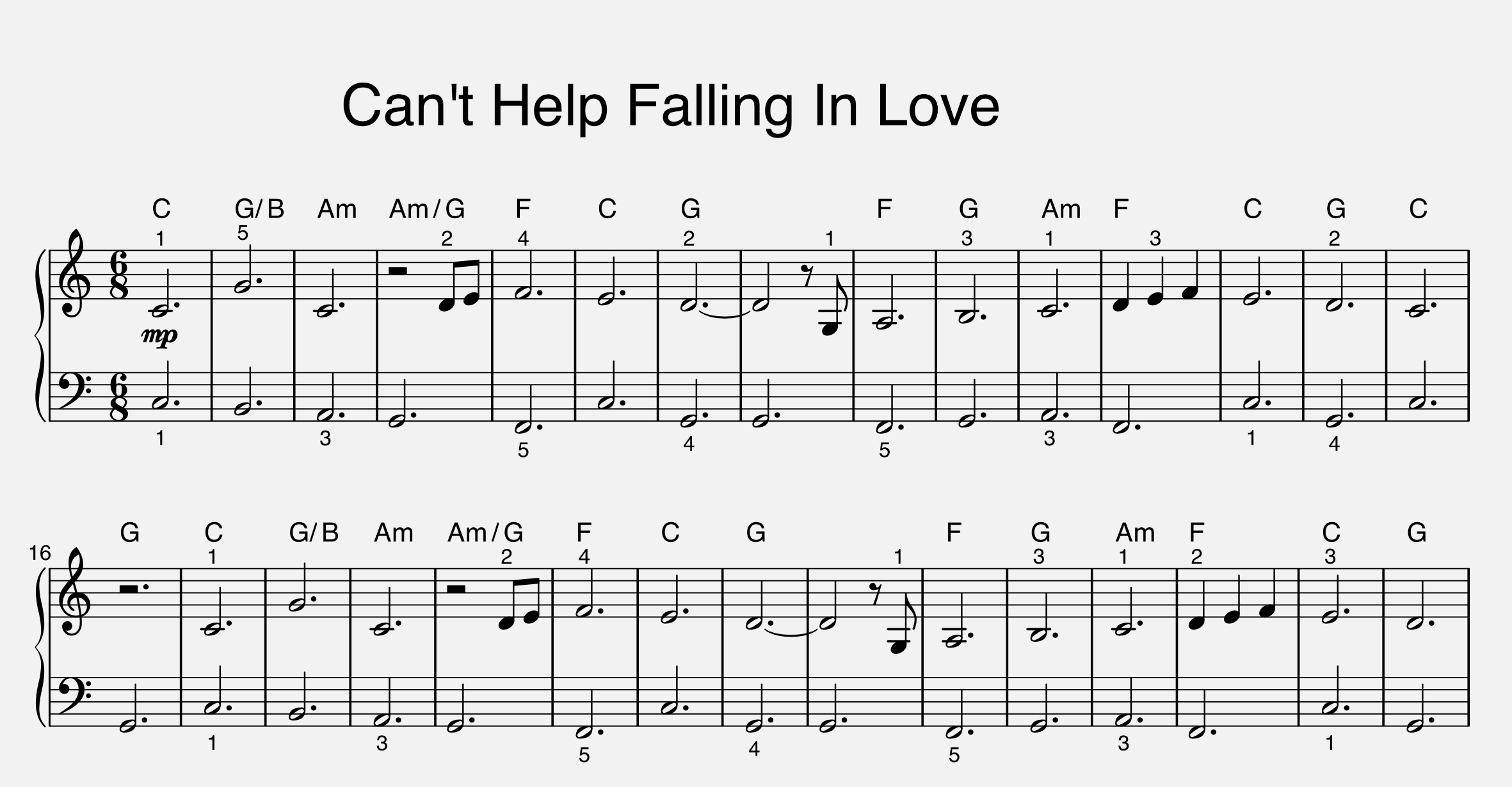
Let’s break it down hand by hand.
Playing the notes with the right hand
Place your thumb (finger 1) on middle C and let your fingers rest naturally on the next keys D(2), E(3), F(4) and G(5).
These five notes cover almost the whole melody.
The opening phrase moves step by step:
C(1) G(5) C(1) D(2) E(3) F(4)
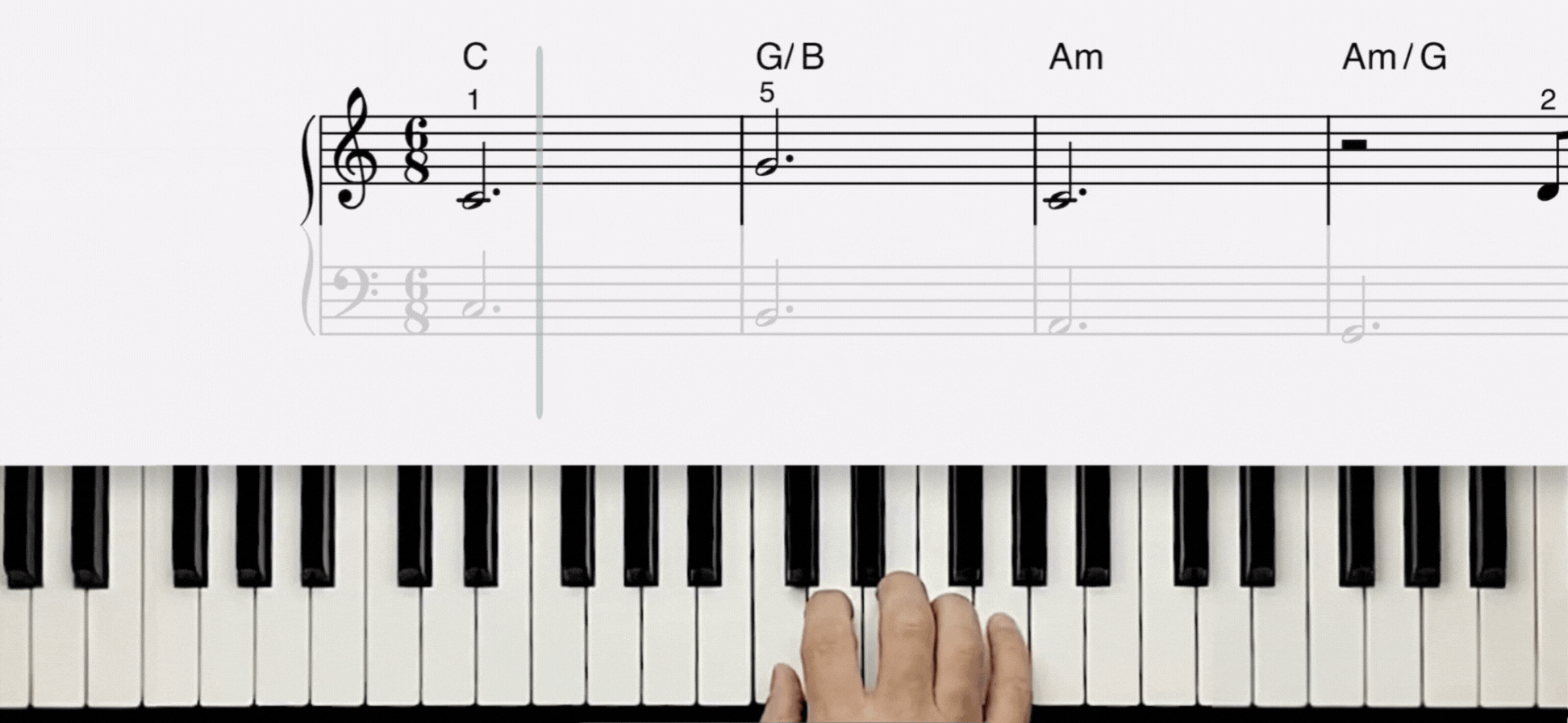
Play this slowly with your right hand until it feels smooth. This line repeats with slight variations, so once you’re comfortable here, the rest will feel familiar.
Playing the notes with the left hand
Place your pinky (finger 5) on the C below middle C. Your other fingers will naturally fall onto B(4), A (3), G (2), and F (1).
The left hand keeps things simple:
C(1) – B(2) – A(3) – G(4) – F(5)
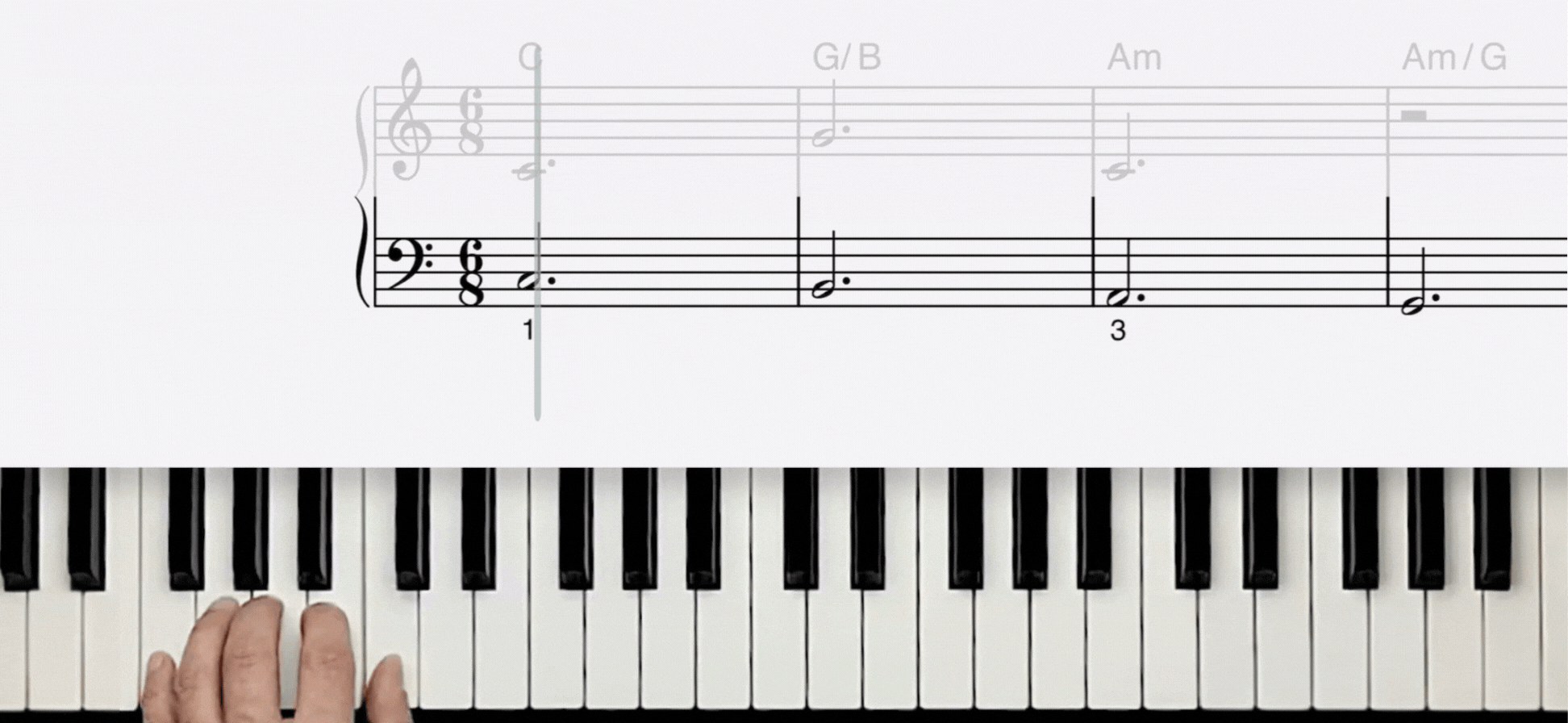
Think of your left hand as the steady heartbeat of the song, slow, calm and supportive. As you get more confident, you can expand into fuller chords or broken patterns, but even with single notes, the accompaniment already sounds beautiful.
How to play “Can’t Help Falling in Love” on piano?
You’ve practiced the melody in your right hand and the bass notes in your left. Now it’s time to bring them together and hear Can’t Help Falling in Love on piano. Don’t worry if it feels a little tricky at first with slow, steady practice, your hands will begin to work together smoothly. In this video tutorial you can watch the finger positions, follow along with the notes and pause or rewind as often as you need.
“Can’t Help Falling in Love” practice tips
Here are some simple but powerful tips to help you get there:
- Play hands separately first – Don’t rush into both hands together. Start with just the right-hand melody until it feels comfortable, then practice the left-hand bass notes on their own. Once each hand feels easy, combine them slowly.
- Count in six – This song is in 6/8 time, which means you’ll feel it in two groups of three: “1-2-3, 4-5-6.” Counting like this helps you keep that gentle, waltz-like flow.
- Keep the left hand simple – It’s completely fine to start with single bass notes in the left hand. Once you feel confident, try expanding to simple chords or broken patterns for a richer sound.
- Play the melody slowly – really listen to the sound you’re making. This will help you develop control and add emotion to your playing, even as a beginner.
Ready to play more?
You’ve just taken your first steps toward knowing how to play Can’t Help Falling in Love on piano. This is just the beginning. With Skoove, you can go beyond this piano song and explore hundreds of others, all with interactive guidance to keep you motivated.
Author of this blog post:
Matthew Dickman

With over a decade of experience in music education Matthew holds a BA in Music from Paul McCartney’s LIPA and an MA in Composition from the University of Salford. Mathew has developed a distinctive compositional voice and approach to music theory education through his research and work in the music industry. Matthew’s writing for Skoove combines experience from orchestral and media composition, and as a gigging jazz musician, to create a wholistic and accessible pedagogy for musicians of any level. Away from music, he enjoys reading and exploring nature to expand his horizons and knowledge contributing to his holistic teaching style.







